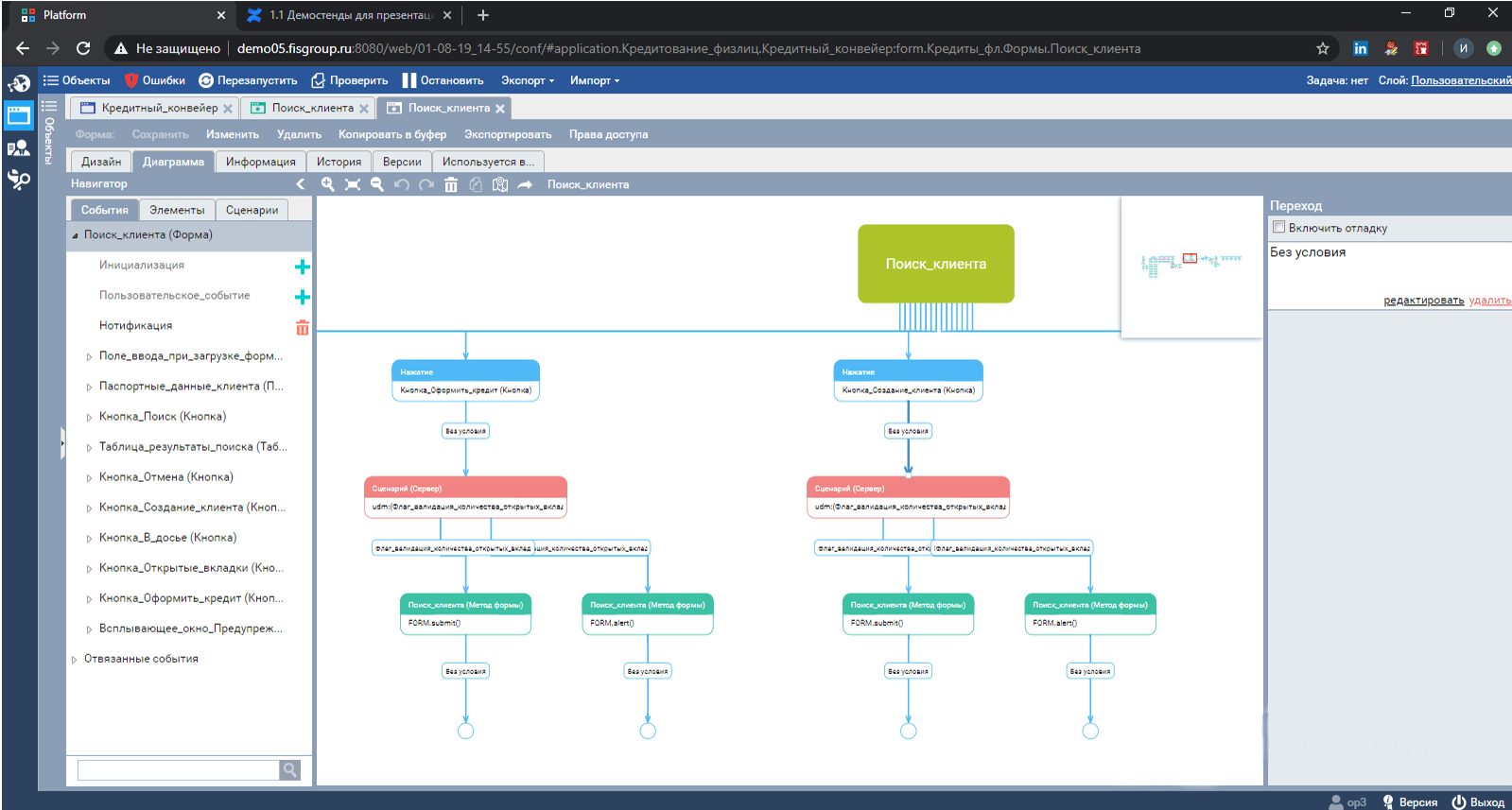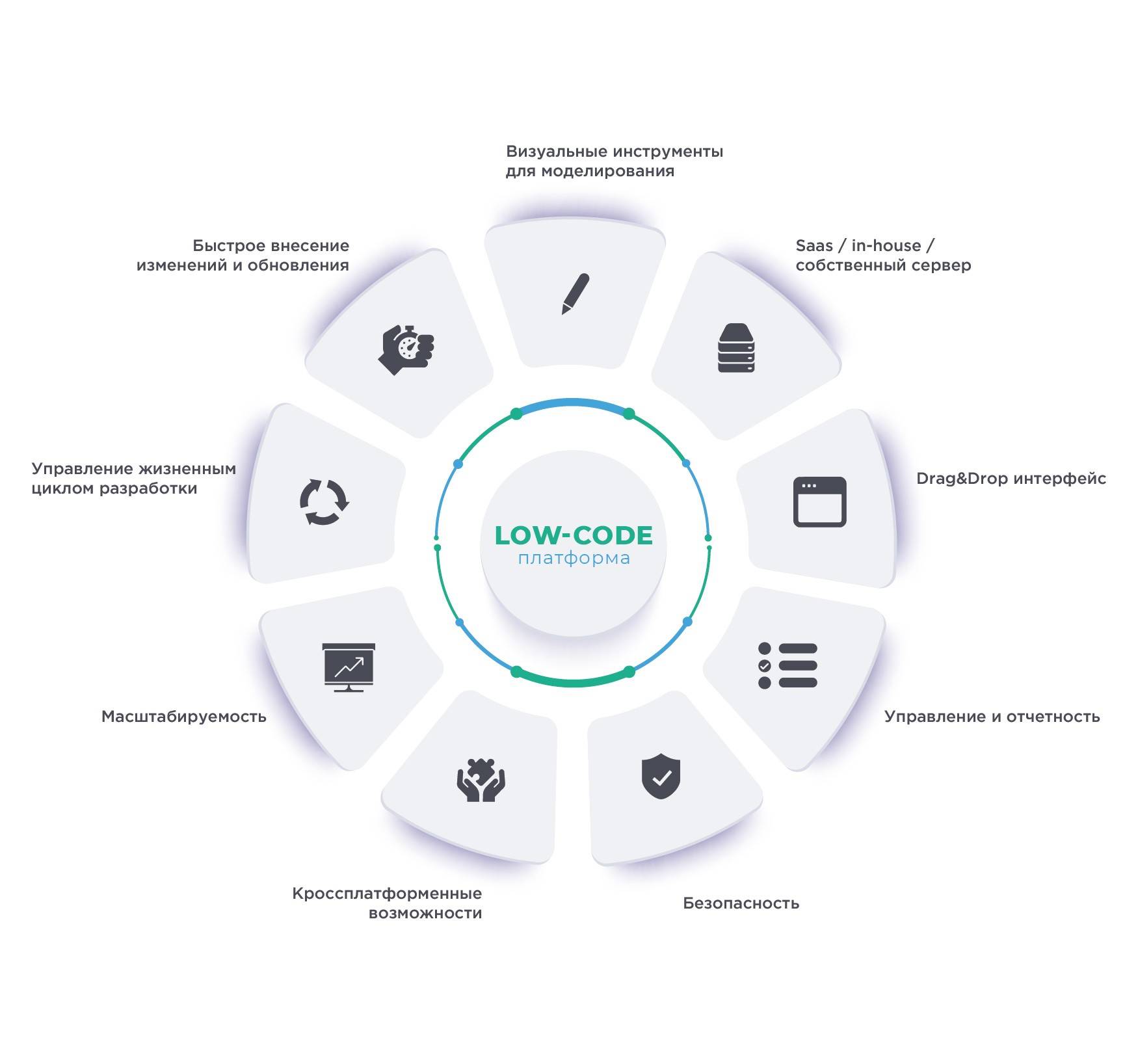tools for process automation and rapid development of business applications

It affects all stages of the application development lifecycle and allows for creating applications ready for practical use without programming (without writing code in the classical sense). If necessary, it is possible to fine-tune an application using code, but usually a Citizen Developer-level specialist can handle it independently.
The system core contains only designer elements, and the drag-and-drop function along with the intuitive interface allow for quickly creating any type of system. Model-based development allows for visualizing the application workflow as it is created, with the ability to launch it with one-click deployment.
Create cross-platform applications with preconfigured modules, workflow, templates, connectors and much more. Application components can be customized and expanded by designer analysts, whose Platform training can take 2-4 weeks.
Quickly deploy new applications and supplement existing ones as the customer requirements and business needs change. The flexibility of technologies ensures support for continuous delivery and scalability during execution and development according to the customer requirements.

Development using graphic tools and visual modeling with a minimum amount of code.
Development using manual coding.
Using tools for rapid application development, such as Case Platform that has everything you may need.
Developers use web frameworks and special programming languages for hard-code applications.
Minimum basic knowledge is needed. Designer analysts easily handle creating applications. When developing complex systems, less than 10% of development requires any coding.
Professional developers with advanced programming skills and knowledge of several web frameworks are required.
Low-code platforms are characterized by fast development. A web application can be created in just 1-3 weeks. Developing complex and productive systems will take a little longer.
Traditional development requires hard-code and can take from 2 to 8 months. High-performance systems need even more.
There may be a number of template solutions and limited functionality, but any customization is possible in Case Platform.
With traditional application development, you can customize your application according to your specific requirements.
Application deployment is fast. However, applications can only be deployed to supported low-code platforms that were used for development.
Traditional web applications can be deployed to any platform.
Low-code applications are relatively easy to maintain. Platforms are often updated automatically. As a result, minimum resources are spent on regular maintenance.
Custom web applications can be difficult to maintain and update regularly. A special command is needed for every code update.
Development using graphic tools and visual modeling with a minimum amount of code.
Using tools for rapid application development, such as Case Platform that has everything you may need.
Minimum basic knowledge is needed. Designer analysts easily handle creating applications. When developing complex systems, less than 10% of development requires any coding.
Low-code platforms are characterized by fast development. A web application can be created in just 1-3 weeks. Developing complex and productive systems will take a little longer.
There may be a number of template solutions and limited functionality, but any customization is possible in Case Platform.
Application deployment is fast. However, applications can only be deployed to supported low-code platforms that were used for development.
Low-code applications are relatively easy to maintain. Platforms are often updated automatically. As a result, minimum resources are spent on regular maintenance.
Development using manual coding.
Developers use web frameworks and special programming languages for hard-code applications.
Professional developers with advanced programming skills and knowledge of several web frameworks are required.
Traditional development requires hard-code and can take from 2 to 8 months. High-performance systems need even more.
With traditional application development, you can customize your application according to your specific requirements.
Traditional web applications can be deployed to any platform.
Custom web applications can be difficult to maintain and update regularly. A special command is needed for every code update.

Мы используем cookies, чтобы сайт работал лучше. Продолжая пользоваться сайтом, вы соглашаетесь на использование файлов cookies. Вы можете отключить их в настройках браузера. Подробнее — в Правилах использования cookies.